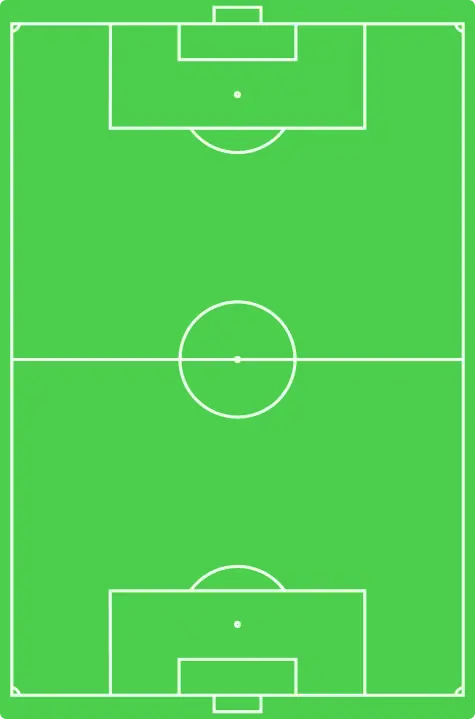Barcelona S.C.
Barcelona Sporting Club (Spanish pronunciation: [baɾseˈlona]) is an Ecuadorian sports club based in Guayaquil, known best for its professional football team. Internationally known as Barcelona de Ecuador or Barcelona de Guayaquil, in Ecuadorian land it is simply referred as Barcelona or El Idolo (BSC). They currently play in the Ecuadorian Serie A, the highest level of football in the country, and hold the distinction of being the only club in Ecuadorian top flight to not have played in the Serie B.[1]
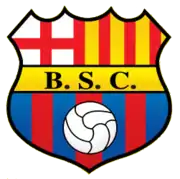 | |||
| Full name | Barcelona Sporting Club | ||
|---|---|---|---|
| Nickname(s) | Ídolo del Ecuador (Ecuador's Idol) Ídolo del Astillero (Shipyard's Idol) Toreros (Bullfighters) La Copia (The Copy) | ||
| Founded | 1 May 1925 | ||
| Ground | Estadio Monumental Banco Pichincha | ||
| Capacity | 60,000 | ||
| Honorary President | Jaime Nebot | ||
| Chairman | Carlos Alfaro Moreno | ||
| Manager | Fabián Bustos | ||
| League | Serie A | ||
| 2020 | Champions | ||
| Website | Club website | ||
|
| |||
Barcelona de Guayaquil is the most successful football team in Ecuador, having won the Serie A title a record 16 times, most recently in 2020. They have also won six regional titles (five in the professional era), and were the first Ecuadorian club to make it to the Copa Libertadores finals, but lost on both occasions, which were commemorated with two black stars above the badge of the 2007 shirt and removed after Liga de Quito won the 2008 Copa Libertadores Final.
Barcelona de Guayaquil was founded on 1 May 1925, by Eutimio Pérez, a Spanish immigrant who named the club after his home city of Barcelona. Since then, Barcelona de Guayaquil has become the most popular club in the country. The club holds a long-standing rivalry with Emelec, where matches between the two teams are referred to as "El Clásico del Astillero". The club plays their home matches in Estadio Monumental Banco Pichincha, the largest stadium in the country.
In addition to football, the club has teams in professional basketball, bowling, boxing, swimming, volleyball, baseball, athletics, and tennis. In 2008, its basketball team was the champion in the Ecuadorian National Basketball League.[2]
History
Foundation and early years (1925–1969)
Aguirre
Sangster
Guzmán
Murillo Moya
Franco
Márquez
Zevallos
Moría
Criollo
Pacheco
Viteri
|
| Barcelona Sporting Club's 1st squad of June 15, 1925. The coach was Eutimio Pérez. |
Barcelona Sporting Club was founded on May 1, 1925 by Eutimio Pérez, a Spanish immigrant who decided to name the club after his home city of Barcelona, Spain. The team was named after Pérez's return to Ecuador, and BSC's Barça-like crest was adopted later on. The team competed in the provincial amateur tournament organized by Asociación de Fútbol del Guayas (AFG), which included clubs from around the Guayas Province in Ecuador. In the 1940s, Barcelona's popularity grew partly by its notoriety in playing matches against important Colombian teams, such as Deportivo Cali and Millionarios, two of the best teams from Colombia's golden era of football. Barcelona defeated Millionarios twice in Guayaquil, by scores of 3–2 and 1–0.
A curious fact is that everything started from the same place where the club which at the end would be its most intense sports rival was founded, the Club Sport Emelec, since both clubs were born from the same neighborhood of Guayaquil; barrio de astillero de Guayaquil
In 1950, Barcelona de Guayaquil won its first AFG amateur title; the following year, the Association turned professional, and between 1951 and 1967, Barcelona racked up five professional regional titles and finished as runners-up six times, tying crosstown rival Emelec for the most titles. In 1957, as one of the top two finishers in the Guayas regional tournament, Barcelona was invited to participate in the newly organized Serie A de Ecuador, which would crown a national championship from among the top two teams from both the AFG and the Interandino tournament disputed by teams from Quito and Ambato. Barcelona of Guayaquil finished second in their first participation. Barcelona won its first national title in 1960, and became the first Ecuadorian team to compete in the Copa Libertadores.
- First match: June 15, 1925 vs Ayacucho (1–0)
- First international match: March 19, 1931 vs
 Deportivo Cali (4–4)
Deportivo Cali (4–4)
Success, then fall from grace (1970s)
By the 1970s, Barcelona had established themselves as one of Ecuador's more popular teams after winning a number of provincial and national championships. Despite their national success, their performance in the Copa Libertadores had been lackluster, having exited the tournament early in competition. That changed in 1971, when they reached the semi-finals of the tournament with a star-studded squad that featured players such as Brazilian international Jose Paes, Peruvian World Cup player Pedro Pablo León, and Ecuadorian legend Alberto Spencer. Although they failed to reach the finals, at that time Estudiantes de La Plata was undefeated 4 years in row in home matches in Copa Libertadores, they managed to defeat three-time tournament winner Estudiantes de La Plata 1–0 in La Plata, later it would be recognized as La Hazaña de la Plata.[3] In 1972, they reached the semi-finals again, establishing themselves in the international stage.
The first two years of the decade were in stark contrast to the remainder; after the 1972 season, the club entered a dry spell that would last nine years. Barcelona did not win a national title, nor did it qualify for the Copa Libertadores, until the 1980s.
Resurgence (1980s)
In the 1980s, Barcelona shed the shackles of the prior decade and resurged on the international and domestic fronts. In 1980, the team won their first national title since 1971, going on to win four more before the end of the decade, making the 1980s the team's most successful period in terms of national titles; Barcelona became the first Ecuadorian squad to win 10 national championships. During this period, Barcelona competed in six editions of the Copa Libertadores, reaching the semi-finals twice in 1986 and 1987. In 1988, the club hosted a historic meeting against FC Barcelona from Spain, which the Ecuadorian club derived its name from, during the Guayaquil City Cup friendly; the Ecuadorian Barcelona emerged victoriously 2–1.[4]
In 1987, Barcelona inaugurated a new home ground, the Estadio Monumental. With a capacity of almost 90,000 spectators, the Monumental is the largest stadium in Ecuador, and the second-largest in South America, after the Estádio do Maracanã in Rio de Janeiro.
The glory years (1990s)
In 1990, under a new president, and with the firm intention of conquering the Libertadores Cup, the club acquired key international players: former Argentine international and World Cup champion in 1986 Marcelo Trobbiani, Argentine international Alberto Acosta, and Uruguayan Marcelo Saralegui. With the inclusion of the foreign players and a batch of young as well as experienced Ecuadorian players, they played a fantastic tournament.
In 1990 Copa Libertadores edition, a dramatic semi-final home and away series, Barcelona beat River Plate of Argentina in a penalty shoot-out, to finally reach the long-awaited final. Unfortunately they would come short, losing against Olimpia of (Paraguay) 2–0 in the away game, and tying 1–1 in the home game. Many considered the referee had affected the outcome in favor of the Paraguayan team. But with the runner up title, they would finally be considered among the best and most respected teams in South America.
In 1992, they put together another great team, beating the previous champions Colo-Colo (Chile) and reaching the Libertadores Cup semi-finals once again, but losing against the powerful Brazilian team of São Paulo, who at the time was coached by Tele Santana. Among their stars, São Paulo had players such as Zetti, Cafu, Raí, Müller and Palhinha.
This decade also proved to show a negative side in the team's history. On December 26, 1993, three days after Barcelona had achieved the second place in the Ecuadorian league and earning a spot in the next Libertadores cup, Ecuadorian striker Carlos Muñoz died in a car accident at the age of 26.
After winning the Ecuadorian league title in 1997 (their last until 2012) with the help of such players as former Bolivian international Marco "El Diablo" Etcheverry, former Colombian international Anthony "El Pipa" De Avila and former Ecuadorian international Agustin "Tin" Delgado, they would go on to play the 1998 Libertadores Cup with mostly old players that seemed to be on their way out. But against all odds, they would reach their second Libertadores Cup final, losing both championship games against Brazilian team Vasco Da Gama, 2–0 in the away game and 2–1 in the home game.
Title drought (1998–2012)
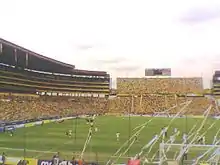
Barcelona did not win a national title for 15 years since 1997, and participated in only two editions of the Copa Libertadores in the 2000s (decade). Despite the lack of titles in recent years, the club remains among the most successful teams in the league, having managed three Serie A runners-up finishes in the decade. Barcelona continues to be among the top contributors to the Ecuadorian national team, and remains one of the most popular teams in Ecuador. The derby with crosstown team Emelec, remains the most popular football rivalry in Ecuador.[5]
Maruri and Harb Era (2007–2011)
During November 2007, Eduardo Maruri was elected President of Barcelona for the 2007–11 period. Maruri and Noboa (Barcelona's Vice President) introduced the slogan La Renovación (The Renovation), thereby promising to bring in key international players as well as the best Ecuadorian players and to clean up the mess that had prevented Barcelona from winning the national title.[6] However, the 2009 season was Barcelona's worst season in its history in the Serie A. Such teams as Deportivo Quito, ESPOLI, Deportivo Cuenca and LDU Portoviejo came out and spoke about their concern: if Barcelona were relegated, it would enormously impact those teams' economic situations, since when they would play at home against Barcelona it would almost guarantee a sell-out. (This was because Barcelona had the most fans of any team in Ecuador.[7]) On October 3, 2009, more than 70,000 fans showed up at the Estadio Monumental Banco del Pichincha to support El Idolo del Ecuador so that it would not be relegated to the Serie B. In an intense match, Barcelona defeated LDU Portoviejo 2–0 with goals from José Luis Perlaza (46th minute) and Juan Samudio (90th minute). This allowed Barcelona to remain the only Ecuadorian team that has never played a game in Serie B.[8][9][10]
On November 5, 2009, Barcelona's President, Eduardo Maruri, announced the hiring of a multimedia communications group from Spain, MediaPro, to help them as a consultant and guide them through the new decade in the aspects of advertisement, finance, and sport. This was done with the hope of bringing Barcelona back to international prominence and giving the fans what they most desired, the elusive 14th domestic title.[11][12]
However, Eduardo Maruri resigned the presidency of Barcelona during a surprise press conference on December 22, 2010, stating that he was doing so because of "family issues".[13] Maruri was resigning one year before the scheduled completion of his term. After Maruri resigned, Juan Carlos Estrada was designated as the new President of Barcelona.[14] Estrada also resigned the next day and Alfonso Harb Viteri assumed the presidency. Harb stated that he was going to step down as President and announced that Barcelona's presidential elections would be held on June 11 of the following year.
Noboa Era (2011–2015)
The businessman Antonio Noboa with his slogan Primero Barcelona, defeated his opponent Jose Herrera and was sworn as the new president of Barcelona SC on June 11, 2011.[15]
During the Noboa era, Barcelona managed to win the 2012 Serie A, ending a 14-year without a title.[16]
Cevallos Era (2015–2020)
Former goalkeeper José Francisco Cevallos assume the presidency of Barcelona on December 13, 2015 against Universidad Católica in Barcelona's home stadium, "El Monumental". His term will end in 2020.[17]
Colours and badge
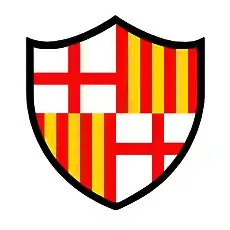
The crest of Barcelona has changed over the years. The teams' first crest consisted of a modified version of the city of Barcelona's Coat of Arms in dark blue borders. The team used this crest for two years until 1927. In 1935, the first major change came when they used Barcelona's flag in a circle, with a triangle behind it bearing the team's initials. In 1955, after the team won their first Guayas Championship, the team adopted their current crest, which is similar to FC Barcelona's. Changes they made to it included the number of spikes, the colour of the ball, border colour, and the initials.
Uniform evolution
1925–26 |
1926–42 |
1942–46 |
1947–present |
The team's traditional colors are yellow and red, with the home kit being all yellow since the mid-1950s, which was designed by the Catalan Alberto March and chose those colors in honor of the flag of Catalonia, since then these have been the representative colors of Barcelona.
Prior to that, the teams used to play in black and white kits. For a period early in their history, the team used a kit similar to FC Barcelona's, but after a series of losses in that uniform, the team president swore never to wear those colors again. In the 1940s, yellow was introduced, and would eventually become the team's primary color, replacing white altogether; red would become the secondary color, used in their alternate kit.
Stadium
Barcelona has played in three stadiums. Their first stadium was Estadio George Capwell, with whom they shared with crosstown rival Emelec as it was the only stadium in Guayaquil.
In 1959, they moved to the Guayaquil's brand new stadium Estadio Modelo. This was the stadium in which the teams played in during the golden years. For several years Barcelona shared this stadium with Emelec and Patria.
After Estadio Modelo's success, the president of Barcelona, Isidro Romero Carbo, initiated the project to give Barcelona their own stadium. Romero talked with Jaime Nebot, Guayaquil's mayor, and León Febres Cordero, then President of Ecuador (both of whom are Barcelona fans) about the idea; they decided to help. Nebot donated a huge ground, for construction and Febres Cordero helped him with money. In 1986, Romero put up the first block of the stadium in 1986. In 1987, Estadio Monumental opened for the first time. The stadium was the first in Ecuador to have suites, and became the largest in terms of capacity, with space for close to 90,000 fans.
Recently the team signed a ten-year deal with Latin America Futbol Corporation to install a state of the art LED perimeter board in the Estadio Monumental Banco Pichincha. The 243-meter LED perimeter board was installed in September 2008 and is the first LED perimeter board in an Ecuadorian soccer stadium. The deal is a 50–50 partnership between the two groups. On July 12, 2015 a Giant LED perimeter board was debuted in the Estadio Monumental Banco Pichincha, the biggest in South America, which is located in the north sector in parish Tarqui of Guayaquil.
Supporters
Barcelona has the largest fanbase of any team in Ecuador.[18] When Barcelona plays away, many of their followers from the city of the home team show up to the stadium to root for Barcelona so it seems like Barcelona is the home team.
Barcelona's ultras are known as La Sur Oscura (English: The Dark south). During home matches, they are located in the southern end of the Estadio Monumental. In Quito, Barcelona's Ultras are known as Sur Oscura Quito (English: Dark South Quito). Another of Barcelona's Ultras are known as Zona Norte (English: North Zone). There are more from different parts of the country.
Rivalries
El Clásico del Astillero is a match played against Barcelona's old rival Emelec. It was not until August 22, 1943 that the two sides faced each other for the first time, in a Guayaquil League match. Sporting their distinctive yellow jerseys, Los Canarios defeated El Eléctrico 4–3, with Pedro Villalta scoring a late winner for Barcelona. It was a match that would forever be remembered as The Derby of the Posts due to the number of times that the Emelec forwards struck the woodwork.
In 1948, the local derby received a name of its own in a preview in the newspaper El Universo, becoming known forever more as El Clásico del Astillero (The Shipyard Derby).
In 1990, proved to be a very special year in the history of El Clásico del Astillero, with the two sides facing off in a Copa Libertadores quarter-final second leg on August 29. Barcelona de Guayaquil advanced to the semi-finals after a 1–0 win.
The rivalries between these two teams is immense in Ecuador and international that it caught the eye of international filmmaker Filmadora Panamericana and in 1973 a movie was made titled "El derecho de los pobres", starting Spanish-Mexican actor Enrique Rambal, Mexican actor Enrique Rocha and Ecuadorian soccer player Alberto Spencer, proclaimed the best Ecuadorian soccer player of all times, makes his cinema debut.[19]
On social media, the rivalry between the two teams comes up more frequently. The fans take advantage of any slip of the opposite team to create memes and videos to laugh down, especially the day after a game. The most used phrase to highlight the existing rivalry is "Barcelona, tu papá." (English: "Barcelona is your father"), referring to the fact that Barcelona has always occupied a most important hierarchical position than Emelec in many aspects.[20]
This rivalry has gained special significance with the recent success of both teams in Serie A play, with Barcelona winning in 2012, and Emelec winning in 2013 and 2014. The 2014 championship was decided by a 3–0 Emelec win over Barcelona.[21]
Honours
- Regional[22]
- Campeonato Amateur del Guayas (1): 1950
- Campeonato Professional de Guayaquil (5): 1955, 1961, 1963, 1965, 1967
- National[23]
Players
Current squad
- As of March 28, 2020.
Note: Flags indicate national team as defined under FIFA eligibility rules. Players may hold more than one non-FIFA nationality.
|
|
Out on loan
Note: Flags indicate national team as defined under FIFA eligibility rules. Players may hold more than one non-FIFA nationality.
|
Managers
Current technical staff
| Position | Staff |
|---|---|
| Manager | Fabian Bustos |
| Assistant Manager | Rolando Azas |
| Fitness Coach | Marco Conenna |
| Goalkeeping Coach | Carlos Caicedo |
Last updated: 07 January 2020
Source: El Universo
Notable managers
List according to each manager that has won a title.[24]
 Julio Kellman (won the 1960 Serie A title)
Julio Kellman (won the 1960 Serie A title) Gradín (won the 1963 Serie A title)
Gradín (won the 1963 Serie A title)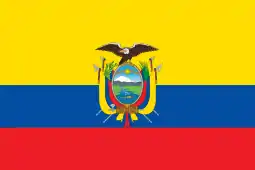 Pablo Ansaldo (won the 1966 Serie A title)
Pablo Ansaldo (won the 1966 Serie A title) Otto Vieira (won Serie A titles 1970,71 and 80)
Otto Vieira (won Serie A titles 1970,71 and 80) Hector Morales (won the 1981 Serie A title)
Hector Morales (won the 1981 Serie A title) Luis Santibáñez (won the 1985 Serie A title)
Luis Santibáñez (won the 1985 Serie A title) Roque Gastón Máspoli (won the 1987 Serie A title)
Roque Gastón Máspoli (won the 1987 Serie A title) Miguel Brindisi (won the 1989 Serie A titles)
Miguel Brindisi (won the 1989 Serie A titles) Jorge Habbeger (won the 1991 Serie A titles)
Jorge Habbeger (won the 1991 Serie A titles) Salvador Capitano (won the 1995 Serie A title)
Salvador Capitano (won the 1995 Serie A title) Rubén Insúa (won the 1997 Serie A title)
Rubén Insúa (won the 1997 Serie A title) Gustavo Costas (won the 2012 Serie A title)
Gustavo Costas (won the 2012 Serie A title) Guillermo Almada (won the 2016 Serie A title)
Guillermo Almada (won the 2016 Serie A title) Fabián Bustos (won the 2020 Serie A title)
Fabián Bustos (won the 2020 Serie A title)
References
- "Barcelona se juega 84 años de historia en la A". Eluniverso.com. October 1, 2009. Retrieved November 29, 2018.
- "Barcelona campeón nacional de basketball". Web.archive.org. July 19, 2011. Retrieved November 29, 2018.
- "La Hazaña de la Plata". BSC Official Web site. March 6, 2010. Archived from the original on March 29, 2010. Retrieved March 6, 2010.
- https://diegoarcos.com.ec/hace-28-anos-barcelona-de-espana-jugaba-en-guayaquil/
- "El Clásico del Astillero". Football Derbies. February 11, 2010. Archived from the original on January 14, 2010. Retrieved February 11, 2010.
- "Maruri ganó las elecciones". EL UNIVERSO. November 23, 2007. Retrieved March 6, 2010.
- "Y si Barcelona desciende a la B?". UltimasNoticias. September 18, 2009. Retrieved September 18, 2009.
- "Barcelona salvó la categoría". EL UNIVERSO. October 3, 2009. Archived from the original on October 6, 2009. Retrieved October 3, 2009.
- "Barcelona de Guayaquil Salva la Categoría de Fútbol Video". LATV Ecuador. October 4, 2009. Archived from the original on July 17, 2011. Retrieved October 4, 2009.
- "EL ÍDOLO DEL ECUADOR GANÓ 2X0". BSC official website. October 3, 2009. Archived from the original on June 4, 2008. Retrieved October 3, 2009.
- "Maruri "Este grupo asesor nos va a guiar hacia la nueva década"". BSC official website. November 5, 2009. Archived from the original on October 3, 2011. Retrieved November 5, 2009.
- "Barcelona llegó a un acuerdo con Mediapro". BSC official website. November 5, 2009. Archived from the original on October 3, 2011. Retrieved November 5, 2009.
- "Eduardo Maruri renunció a Barcelona". El Universo. December 22, 2010. Retrieved December 22, 2010.
- ""Amor, trabajo y más trabajo", promete Juan Carlos Estrada, flamante presidente de Barcelona". Marcador. December 22, 2010. Archived from the original on December 25, 2010. Retrieved December 22, 2010.
- "Antonio Noboa ganó las elecciones y presidirá Barcelona". El Universo. June 11, 2011. Retrieved June 10, 2011.
- "Barcelona: La era Noboa deja interrogantes". La Hora. October 17, 2015. Retrieved April 2, 2016.
- "José Francisco Cevallos, nuevo presidente de Barcelona Sporting Club". El Universo. October 1, 2015. Retrieved April 2, 2016.
- "Barcelona, Liga y Emelec son los equipos con más hinchada en el país". El Comercio. Retrieved November 29, 2018.
- "El derecho de los pobres". IMDb.com. Retrieved November 29, 2018.
- https://hinchaamarillo.com/2016/10/26/noticias/los-memes-que-dejaron-el-clasico-del-astillero-fotos/. Missing or empty
|title=(help) - "Emelec goleó 3–0 a Barcelona y es bicampeón del fútbol ecuatoriano". Eluniverso.com. December 21, 2014. Retrieved November 29, 2018.
- Ávila Villagómez, Esteban (December 29, 2000). "Ecuador – Champions Costa". RSSSF. Retrieved November 8, 2010.
- "Archived copy". Archived from the original on April 21, 2010. Retrieved June 18, 2010.CS1 maint: archived copy as title (link)
- "BSC Campeonatos". BSC official website. November 21, 2010. Archived from the original on November 19, 2010. Retrieved November 21, 2010.
